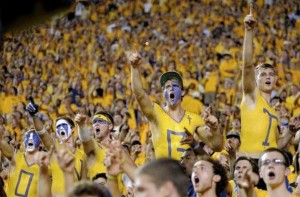 Louisiana State University recently shared an image of the Painted Posse in the school’s e-mail newsletter that has generated significant controversy. Rather than using the original image, the school shared an edited image that removed the small cross painted on each man’s chest.
Louisiana State University recently shared an image of the Painted Posse in the school’s e-mail newsletter that has generated significant controversy. Rather than using the original image, the school shared an edited image that removed the small cross painted on each man’s chest.
When questioned, the following explanation was offered:
We don’t want to imply we are making any religious or political statements, so we air-brushed it out.
Later, the University reversed their position and apologized on Facebook:
LSU sent out a promotional message on October 15 to its sports fans asking for feedback on their experience at the LSU-South Carolina game on October 13. In messages to sports fans we attempt to convey no religious or political messaging.
We did not intend to offend anyone by the editing of this photograph and in the future we will use another photo rather than make a similar edit. We erred in our judgment and we have communicated our apologies to the group of young men represented in the photo whose school spirit is second to none.
So What?
Reading between the lines one must wonder if public relations trumped policy or at least initiated a change in policy. As I understand it, the university’s framework of avoiding making religious statements was previously interpreted to mean that religious symbolism could simply be deleted. Going forward, to respect people’s religion while retaining a commitment to the original intent of the policy, any image containing religious symbolism will simply be ineligible for consideration to be published. While I applaud the honesty of publishing only actual images rather than ones that airbrush away religious symbols, I am left wondering if the new policy creates a different yet equally troubling concern by suggesting that those adorned by any form of religious symbolism are in some way less than people who are visually void of any religious symbolism. We must never pretend that America is a nation void of religion. Universities must be places of teaching and learning that model to their students and the world how to embrace a religiously pluralistic society.
- Do you agree or disagree with LSU’s policy to exclude any religious symbolism from images it publishes in order to avoid implying any form of religious statement? Why?
- What are some helpful and healthy ways you have experienced or can imagine universities embracing religious pluralism? (For more on this, read my review of Eboo Patel’s latest book: Sacred Ground: Pluralism, Prejudice, and the Promise of America.)